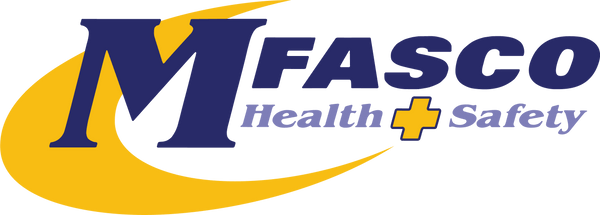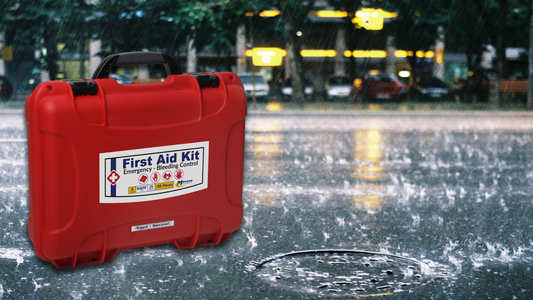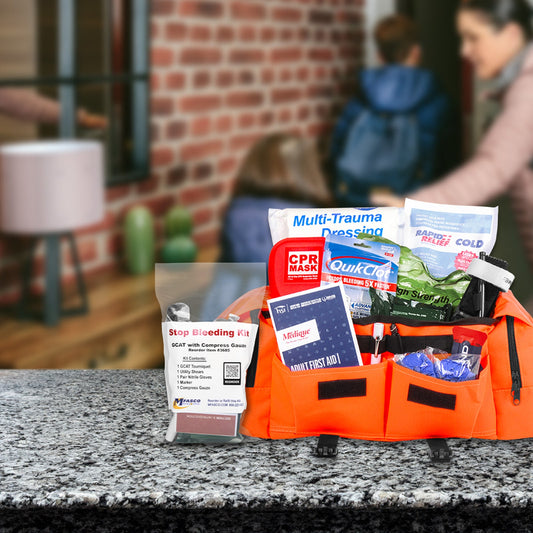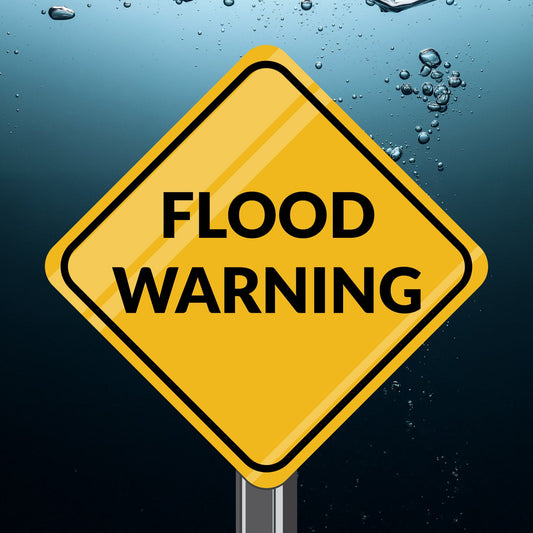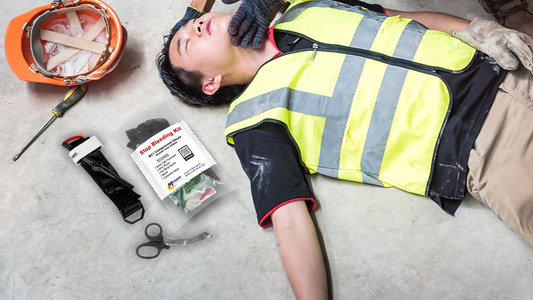First Aid Kits for Severe Bleeding
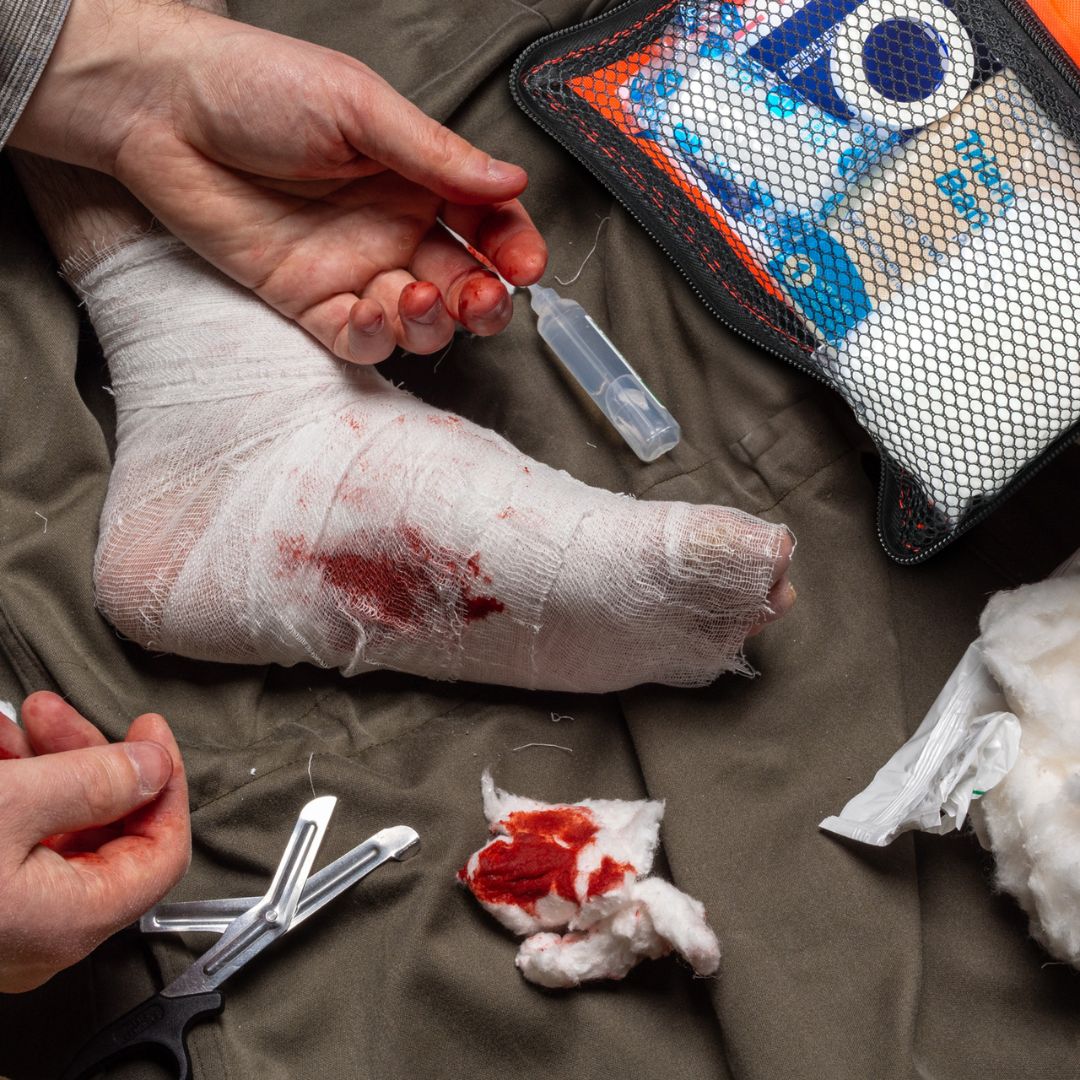
The Importance of Quick Action: First Aid Kits for Managing Bleeding
In emergencies, swift action can mean the difference between life and death. Severe bleeding is one such emergency where every second counts. Having a well-prepared bleeding control first aid kit can be crucial in managing these situations effectively. This guide will highlight the importance of quick response and the essential components of a first aid kit designed to control severe bleeding.
What is Severe Bleeding?
Severe bleeding, also known as hemorrhaging, involves a significant loss of blood from the body. It can result from various causes, including accidents, injuries, or medical conditions. Recognizing severe bleeding is crucial for providing timely and effective first aid.
Top Severe Bleeding Signs to Watch For
Understanding the signs of severe bleeding is essential for prompt identification and response.
Key indicators include:- Profuse Blood Loss: Large amounts of blood pouring from a wound.
- Rapid Pulse and Shallow Breathing: Signs of shock due to significant blood loss.
- Pale, Clammy Skin: Indicating a lack of blood flow to the skin.
- Weakness or Confusion: Symptoms of reduced blood circulation to the brain.
Importance of Quick Response
In severe bleeding situations, quick response is critical. Without prompt intervention, severe bleeding can lead to shock, organ failure, and death. Having a first aid kit ready and knowing how to use it can significantly improve the chances of survival and recovery.
Consider a Stop the Bleed bleeding control first aid kit. Stop The Bleed is a national campaign to create awareness, educate, train, and provide materials to empower bystanders to help provide life-saving bleeding control to victims during emergencies or mass shootings.
Must-Have Bleeding Control Supplies in Your First Aid Kit
Bandages and Dressings
A first aid kit for severe bleeding should include a variety of bandages and dressings:
- Gauze Pads: For covering and protecting wounds.
- Adhesive Tape: For securing dressings in place.
- Adhesive Bandages: For minor cuts and scrapes.
- Pressure Dressings: For covering large wounds and controlling bleeding.
Tourniquets
A proper tourniquet is a vital tool for managing severe bleeding, particularly from limbs.
Tourniquets should be:
- Easy to Apply: Designed for quick and efficient use.
- Strong and Reliable: Capable of maintaining pressure to stop blood flow.
Hemostatic Agents
Hemostatic agents are substances that help blood clot more quickly. Including these in your first aid kit can be life-saving in severe bleeding scenarios. They come in various forms, such as:
- Hemostatic Dressings: Infused with clotting agents.
- Hemostatic Powders: Applied directly to the wound to promote clotting.
Consider getting CutCure, a great solution to your hemostatic needs. This easy-to-apply antibacterial powder helps your bleeding stop 17x faster than traditional methods.
Gloves and PPE
Personal protective equipment (PPE) is essential for safe and effective first aid. Your kit should include:
- Disposable Gloves: To prevent infection and protect the first aider.
- Face Masks and Shields: For additional protection when dealing with blood.
Maintaining and Caring for Your First Aid Kit
Customizing Your Kit
Every first aid kit should be tailored to meet individual needs and the specific risks you may encounter. With MFASCO’s Make a Kit, you can create your own custom kit, perfect for you and your family.
Consider factors such as:
- Location: Home, workplace, or outdoor activities.
- Personal Health Needs: Medications or specific medical conditions.
- Family Members: Including supplies for children and elderly relatives.
Regular Checks
Maintaining your first aid kit is crucial. Regularly check and replenish supplies to ensure everything is in good condition and up to date. No need to purchase a new kit if you already have one; replenish your existing kit with new supplies using MFASCO’s First Aid Kit refills.
Key things to remember:
- Expiration Dates: Replace expired items promptly.
- Used Supplies: Replenish any items that have been used.
- Damaged Items: Replace any damaged or compromised supplies.
Storage Tips
Proper storage of your first aid kit ensures it remains accessible and in good condition. Having a well-stocked and well-maintained first aid kit is great, but if it isn’t accessible or clearly labeled, it could easily be overlooked during an emergency.
It should be stored somewhere with:
- Easy Access: Keep your kit in a location that is easily accessible in emergencies.
- A Suitable Environment: Store in a dry, cool place to prevent damage to supplies.
- Clearly Labeled: Clearly label the kit and make sure all household members know its location.
First Aid Kits as Essential Emergency Tools
Peace of Mind
Having a well-stocked first aid kit provides peace of mind. Knowing that you are ready to handle severe bleeding emergencies can reduce stress and anxiety during such situations.
Readiness for Emergencies
A first aid kit ensures you are ready to act quickly in emergencies. Immediate access to the right tools can make a significant difference in managing severe bleeding effectively.
Stay Prepared with MFASCO
The importance of quick action in severe bleeding emergencies cannot be overstated. A well-prepared first aid kit is an essential tool in managing any emergency. By understanding the key components of a first aid kit, maintaining it regularly, and being ready to act swiftly, you can make a significant difference in emergencies. Stay prepared, act fast, and ensure your first aid kit is always ready for any eventuality.
Contributing Expert

Mike Brinker
Mike Brinker has been working in the first aid industry for over 35 years. He has worked with thousands of businesses,groups, and organizations to provide a healthy and safe work environment. Mike helped create “Make-A-Kit”, the internet's only online first aid kit creation tool. He has also authored many helpful first-aid and safety-related resource articles found at the MFASCO Learning Center.
